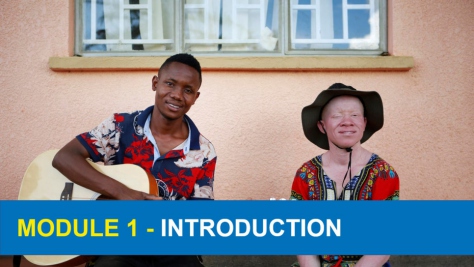Ethiopia: Somali refugees to be relocated away from border
This is a summary of what was said by UNHCR spokesperson Jennifer Pagonis – to whom quoted text may be attributed – at today's press briefing at the Palais des Nations in Geneva.
In Ethiopia today (Friday), UNHCR teams are expected to start relocating a group of 500 newly-recognized Somali refugees who fled from renewed conflict in strife-torn south and central Somalia over the last year. They have been staying around the Kebribeyah area, near the Somali border in eastern Ethiopia and are being relocated to a re-opened UNHCR camp at Teferi Ber.
The refugees are part of a group of 4,000 Somali refugees who have recently been granted refugee status by UNHCR and the government's Authority for Refugees and Returnees Affairs (ARRA). An estimated 7,000 additional Somalis who also claim to have fled fighting and insecurity in Somalia, are waiting to be screened at other sites in eastern Ethiopia.
The new camp site at Teferi Ber, some 120 km north of Kebribeyah, was formerly a UNHCR camp which in the 1990s hosted some 49,000 mainly Somalis refugees who had fled fighting in their country. The camp was officially closed in 2001 after all the refugees returned, mainly to the self -declared republic of Somaliland.
After arriving at Teferi Ber, the refugees will spend three days in a reception centre where they will be allocated plots of land to construct homes and given building materials. They will also be given food as well as tarpaulins, blankets, sleeping mats, kitchen sets, jerry cans, kerosene stoves, and soap. The ARRA has established a temporary health centre until permanent structures can be built.
The Somali Region of Ethiopia already hosts more than 16,500 refugees. With the new arrivals, the total is 20,300. At the peak of the Somali refugee crisis in the early 90s, the region hosted 628,000 refugees in eight camps. The overwhelming majority went home between 1997 and 2005, and all of the camps were closed except a camp at Kebribeyah.
Related news and stories
Thousands of newly arrived Somali refugees in Ethiopia relocated to new settlement
Samira's Story
Drought brings life-threatening food shortages for refugees in Ethiopia
100,000 new Somali refugees arrive in Ethiopia in the past month, UN and partners are calling for urgent funding
UNHCR teams and partners rush assistance to some 100,000 newly arrived Somali refugees in hard-to-reach area of Ethiopia
As the Horn of Africa drought enters a sixth failed rainy season, UNHCR calls for urgent assistance
-

ES/2022/01 UNHCR Asylum Capacity Development Evaluation
1 Jun 2022 This document summarises the findings, conclusions and recommendations of the Independent Evaluation of UNHCR's Support for Strengthening National Asylum Systems. The overall purpose of the evaluation is to review how UNHCR has fulfilled its objective to support and strengthen the capacity of national asylum systems in the period 2015–2020 and thereby improve the quality of protection for persons of concern and the sustainability of the systems that support this. Attachments: Executive Summary, Evaluation Brief, Management Response and Annexes (.zip) -

Video Module 1
31 May 2022 -

Course evaluation
31 May 2022 -

Handout 1 - Video Transcript: Safak Pavey
31 May 2022 The handout contains the transcript of the video statement by Safak Pavey, former UNHCR colleague and member of the CRPD committee, on the importance of working with persons with disabilities in forced displacement. -

Saving Maternal and Newborn Lives in Refugee Situations - Evaluation Summary
31 May 2022 UNHCR implemented a three-year project (supported by the Bill and Melinda Gates Foundation) to reduce neonatal and maternal mortality and morbidity among refugees in Cameroon, Chad and Niger. The project targeted 772,000 refugees and focused on low-cost, high-impact interventions. This document provides a summary of the end of project evaluation. -

UNHCR Facilitators Guide - Working with Persons with Disabilities in Forced Displacement
31 May 2022 This Facilitator's Guide on Strengthening Protection of Persons with Disabilities in Forced Displacement supports UNHCR colleagues, partners and others in the field level to recognize protection concerns faced by persons with disabilities and identify different strategies to mitigate risks and promote the inclusion of persons with disabilities in UNHCR programming. -

Handout 0 - Organizing accessible workshops
31 May 2022 The document provides colleagues and partners with practical tips on organizing accessible and meaningful workshops and training for and with persons with disabilities. -

Handout 2 - Models of disability
31 May 2022 The handout for Module 2 Activity 2 of the Disability Inclusion Facilitator's Guide includes the definitions of the four models of disability: charity model, medical model, social model, and rights-based model. -

Handout 3 - Profile cards
31 May 2022 The Handout contains the individual profile cards to be used during Activity 1 of Module 3 of the Disability Inclusion Facilitator's Guide. Each profile card contains the information of a person of concern with disabilities.
